



johndoe@gmail.com
Are you sure you want to reset the form?
Your mail has been sent successfully
Are you sure you want to remove the alert?
Your session is about to expire! You will be logged out in
Do you wish to stay logged in?
Please note that you will need to be logged in to view the content featured below
The past century has seen Korean cinema evolve from a localised art form into a global phenomenon. This new essay and linked free-to-view content traces its historical development, key figures, and growing influence on the international film landscape.
Korean cinema was born in the early 20th century, under Japanese colonial rule. The occupying forces exercised significant control over the film industry, and as Kate Taylor-Jones details in this chapter of Divine Work, Japanese Colonial Cinema and its Legacy, ‘Censorship and colonialism went hand in hand… government newsreels and print media in this period were focused on the cultural proximity of Japan and Korea and the positive benefits that Japan was bringing to Korea.’ However, despite these restrictions, pioneering works like Arirang (1926) by Na Woon-gyu, symbolised resistance against Japanese colonial rule. As Lee Hyangjin writes in her chapter South Korea: Film on the Global Stage, ‘Arirang, the biggest box-office hit made during the colonial period, set a model for a series of nationalistic resistance films made in later years, and stimulated the first socialist film movement in Korea.’
Following liberation from Japanese rule in 1945, the Korean War (1950–1953) profoundly affected Korea’s cinematic landscape, with American film distributors taking control of the cultural discourse in South Korea. As a result, Korean filmmakers faced continued censorship pressures and had to choose between being anti-communist or remaining apolitical. Kim Soyoung explores this in this chapter of Korean Cinema in Global Contexts, noting that ‘South Korean film historiography was deeply affected by the Cold War mentality and US dominance. Hence, South Korean film scholars emphasize American influence and the entrepreneurial practices embedded in early cinema spectatorship, such as the promotion of trolley cars and cigarettes.’

The 1960s marked the golden age of Korean cinema, characterised by a boom in production and audience growth. Kim Ki-young’s melodrama Hanyo (The Housemaid) (1960), was a key work from this period. An allegory for socio-political upheaval, the film follows a middle-class family whose life unravels when they hire a housemaid. As Kim Soyoung explores in this chapter of Korean Cinema in Global Contexts, the film exemplifies how ‘women from poor rural areas suffered doubly in the postcolonial “recovery,” exploited by the forces of advanced capitalism as well as the patriarchal authority of village life.’
The late 1980s witnessed an easing of censorship and political repression, ushering in a new era known as the Korean New Wave. As Lee Hyangjin writes in her chapter South Korea: Film on the Global Stage, ‘Society finally allowed freedom to the filmmakers who were craving the realization of their creative imaginations…’Directors like Park Kwang-su and Jang Sun-woo emerged, and their ability to challenge convention and address social issues invigorated young audiences in particular.
As Kim Soyoung writes in her chapter From Cine-mania to Blockbusters and Trans-cinema, ‘some members of youth sub-cultures and civil activists initiated film festivals as public platforms from where to address their rights and concerns. The desire to be represented or recognised in public prevails in the various modes of festivals.’

This desire for representation was evident in the unprecedented success of Im Kwon-taek’s 1993 arthouse film, Seopyeonje, which, despite its focus on the traditional art form of pansori (musical storytelling that combines singing, acting, spoken word, and audience participation) was the first Korean film to attract over one million viewers in Seoul alone. As Rhee Jooyeon explores in her chapter Collective Nostalgia and Anxiety in Korean Film Music, ‘Seopyeonje provided a moment of discovery where once erased and forgotten stories of people could return to the present, recalling the times during which ordinary people lived through the tide of colonial history, the Korean War, political oppression, and the intense capitalist development.’
Interestingly, the film to break Seopyeonje's records was Kang Je-gyu’s 1999 action blockbuster, Shiri. Regarding the film’s impact, Darrel William Davis and Emilie Yueh-yu Yeh write in this chapter of East Asian Screen Industries, 'Shiri was a Korean box-office champion, with over 2.5 million admissions in Seoul alone. While Seopyeonje is culturally specific, Shiri addresses any fan of Hollywood thrillers like Die Hard (1988), True Lies (1994), Face/Off (1997) and James Bond.’ The film follows a South Korean secret agent as he tracks down a highly skilled North Korean assassin plotting a devastating bioterrorist attack on Seoul. The commercial success of the film evidences, as pointed out by Kim Soyoung, that ‘the presence of North Korea as immediate ‘other’ has also always provided an alibi and, ironically, contributed to securing the discursive stability of South Korean national identity.’

By the 2000s, Korean films were gaining international recognition and establishing a global audience. As We Jung-Yi writes in her chapter Between Longing and Belonging: Diasporic Return in Contemporary South Korean Cinema, ‘Breaking from the social realism of the Korean New Wave in the 1980s, South Korean cinema in the 1990s and onward has become the central site in which new identities and communities are being imagined.’
The decade was marked by Korean auteurs like Bong Joon-ho and Park Chan-wook, who showcased unique storytelling and stylistic approaches. As Jeong Seung-hoon writes in his chapter A generational spectrum of global Korean auteurs, ‘Our auteurs stage a variety of pointed ethical dilemmas in disguised political settings, offering different entry points into the nation’s moral, biopolitical, psychoanalytic matrix of power and justice, desire and abjection.’

Park Chan-wook’s Oldboy (2003), won the Grand Prix at the Cannes Film Festival in 2004. However, it resists straightforward categorisation; blending elements of action, thriller, and psychological horror in a way that has had a lasting impact on Korean cinema. As Ken Provencher and Mike Dillon consider in their introduction to Exploiting East Asian Cinemas, ‘On the one hand, the film is tied to a specific national cinema… but on the other, it is teeming with boundary-crossing qualities that beckon analysis…’
Similarly, in Memories of a Murder (2003), Bong Joon-Ho manipulates the generic conventions of crime, drama, and dark humor, to provide a haunting social commentary on justice, morality, and human frailty. As Kim Kyu-Hyun writes in his chapter Don’t Bother to Dispatch the FBI, the film raised the ‘kinds of questions seldom asked in “serious dramas” recreating or reflecting on the historical traumas of 1980s Korea...’ This generic fluidity remains characteristic of his subsequent works, as Barry Keith Grant outlines in 100 Science Fiction Films, ‘Ostensibly a monster movie, The Host (2006) is at once serious political commentary and genial comedy.’ Joon-ho’s most recent film Parasite (2019) won the Palme d'Or at the Cannes Film Festival and became the first non-English-language film to win the Academy Award for Best Picture.
From its early beginnings during the colonial era to its contemporary status as a global cinematic powerhouse, Korean cinema has continually reinvented itself while remaining deeply connected to its cultural roots. The innovative storytelling techniques, genre-blending, and cultural authenticity present in Korean films have inspired filmmakers worldwide, leading to a greater appreciation for East Asian cinema as a whole.
Homepage banner image courtesy of Maximum Film / Alamy Stock Photo.
Since the 1990s, a new generation of female heroines has appeared on our TV screens: leading women who challenge gender stereotypes and redefine ‘main character energy’ for a 21st century audience.

One of the most iconic and enduring cult TV heroines is Dana Scully from The X-Files (1993-2018), portrayed by Gillian Anderson. Her character has had a profound and even quantifiable impact on audiences, as Jolene Mendel explores in her chapter ‘The Scully effect: The X-Files and women in STEM’, ‘Nearly two-thirds (63 per cent) of [American] women that work in STEM say Dana Scully served as their role model.’ The show resonated with audiences because of its inversion of gender stereotypes, as Lorna Jowett writes in this chapter of The Cult TV Book, ‘The X-Files presents the female Scully as logical, rational, and scientific and the male Mulder as impulsive, intuitive, and open to ‘irrational’ explanations…such representation helps develop contemporary cult characters who no longer match up neatly to traditional gender roles or gendered characteristics.’
Despite this, the show also reinforced gender roles, as evident in one of its longest story arcs, that of Scully’s alien abduction and subsequent pregnancy. Anne Sweet writes in her chapter ‘Moving into the mainstream: Pregnancy, Motherhood and Female TV Action Heroes’, ‘Scully was considered a trailblazer in terms of female agency on TV – with heroes like Xena and Buffy following directly in her wake – and yet she is also a victim, especially as pertains to maternity and her reproductive functions.’ The series’ ambiguous gender dynamics can be seen as a direct reflection of its generic ambiguity, as J.P. Telotte writes in this chapter of Science Fiction TV, ‘That sense of mixed elements, carries beyond plot lines and iconic images to the level of main characters, as the show centres its investigative activities on seemingly opposite central figures.’

This generic hybridity is equally present within Joss Whedon’s Buffy the Vampire Slayer (1997-2003). Sarah Michelle Gellar’s Buffy Summers is a high school student who fights vampires and other manifestations of the supernatural. As Carolyn Cocca writes in her chapter ‘Slayers. Every One of Us’, ‘Buffy is grounded in the Third Wave of feminism. She embodies an attractive female warrior while parodying it through her body and speech, criticizing the superhero and horror genres and gendered inequalities with humor.’ However, despite Buffy’s immense popularity, Gellar was never nominated for an Emmy. Rhonda Wilcox explains this oversight in her introduction to Why Buffy Matters, ‘Buffy suffers from prejudice related both to its medium, television, and its genre, fantasy.’ In contrast, Lorna Jowett writes in her chapter ‘Whedon, Feminism, and the Possibility of Feminist Horror on Television’, ‘the combination of TV and horror encourages, even necessitates, innovation and evolution. Buffy is one example of TV horror that examines how hard it is to be a woman over and over from all these different angles.’

Another notable 90s heroine is Xena from Xena: Warrior Princess (1995-2001) played by Lucy Lawless. As Kathleen Kennedy writes in this chapter of American Militarism on the Small Screen, ‘women like Xena, challenged men’s exclusive claim on the quest narrative…demonstrated women’s mastery of violence, command decisions, and rational problem solving.’ Over time, her character became equally as known for her martial skills as for her close relationship with her companion, Gabrielle. Although their sexuality is never explicitly confirmed, as Lynne Joyrich writes in this chapter of Queer TV, ‘sexual ambiguity is central to that show’s campy, fantasy appeal.’ Irrespective of whether their bond is interpreted as erotic, as Yvonne Tasker and Lindsay Steenburg write in their chapter ‘Women Warriors from Chivalry to Vengeance’, ‘for Xena, female friendship becomes a way both to redefine strength and to fight patriarchal dominance.’
These cult TV heroines share common traits of strength, intelligence, and emotional complexity. They break stereotypes and redefine gender roles, and while challenges in representation and character development persist, the impact of these heroines on society and popular culture is undeniable. As Catriona Miller writes in her conclusion to Cult TV Heroines, ‘the heroines are slowly gaining the ability to do things differently, opening up the possibilities of intergenerational solidarity and seeing progressive community as a source of change.’
Discover the creative world of Michael Powell and Emeric Pressburger, collectively known as The Archers, and their enduring impact on the art of filmmaking.

The cinema of Michael Powell and Emeric Pressburger stands as a testament to the creative value of collaboration within the world of filmmaking, Ian Christie reflects on their partnership in this chapter of The Cinema of Michael Powell: International Perspectives on an English Film-Maker: 'Emeric Pressburger's unique relationship with Michael Powell has made distinguishing the contribution of each to their joint work extraordinarily difficult - which is almost certainly how they would both have wished it.'
The Archers' partnership began during the tumultuous years of World War II. While Powell was an established British film director, Pressburger was a Hungarian-born screenwriter who had made his way to England in 1933. Jill Nelmes considers their unlikely creative synergy in this chapter of The Screenwriter in British Cinema: 'Although the men emerged from very different backgrounds, they had similar ideas about film and the empathy between them produced a highly creative working partnership... the combination of Powell's interest in Romanticism and the spiritual and anti-realist side to Pressburger's writing produced some exceptionally crafted and inspired films.'
Together, they established an independent production company, The Archers, in 1942, but as Kevin Macdonald writes in this chapter of Emeric Pressburger: The Life and Death of a Screenwriter, 'As The Archers' films grew in ambition and changed in style so they became less a magic act performed by two individuals and more like a circus, with Emeric and Michael as the ring-masters. The contribution of designers, composers, dancers and cameramen grew, and with A Matter of Life and Death and afterwards The Archers increasingly became a collective name for a group of collaborators.'
The Spy in Black (1939) marked the start of their creative partnership. Charles Barr considers its significance in this chapter of The Cinema of Michael Powell: International Perspectives on an English Film-Maker: 'Though I would not want to make especially high claims for the film as a whole... many of the key elements and qualities of the more complex later films are already recognisable. The first four minutes of The Spy in Black can stand, equally, as an example of the perfect beginning - to a script, to a film and to a twenty-year partnership.'

While their collaborations spanned a variety of genres, a common thread amongst them was a willingness to explore complex and thought-provoking themes. This is exemplified in The Life and Death of Colonel Blimp (1943), which reflects on the nature of friendship and identity. In her BFI Film Classic on the film, A.L. Kennedy considers the ways in which their partnership enabled a unique empathy: 'Powell was, of course, English, but also a complex, transgressive outsider. Pressburger was a refugee chameleon who understood Englishness deeply enough to assimilate himself... But their outsider eye sees everything: fear, wilful ignorance, snobbishness, cruelty. The values of Empire, so close to the values of the Reich, are interrogated and rejected. In all their films, The Archers are fascinated by identity: what it is to be Canadian, American, Irish, Scottish, different but equal.'
The 1940s represented a moment wherein British cinema could finally challenge the frequently backward view of British history and culture that was presented in Hollywood's 'British' films. Powell and Pressburger's A Canterbury Tale (1944) was a key example of this challenge. As Greg M. Colón Semenza and Bob Hasenfratz write in this chapter of The History of British Literature on Film, 1895-2015, 'Powell and Pressburger took care to focus on working people, rather than the wealthy middle-class families American films so often chose to lionize. Perhaps this is why Pressburger was inclined to turn to Chaucer, rather than Jane Austen or William Thackeray or Oscar Wilde... to highlight the diverse cross section of society the film so lovingly depicts.' Adam Scovell, in this chapter of Folk Horror: Hours Dreadful and Things Strange credits the magical aspect of the film to 'the presence of Pressburger as dual creator with Powell, who seemed to always add a sense of uncanny esoterica to create a very untypical British cinema.'

Another hallmark of their cinema was their use of color, especially in films like A Matter of Life and Death (1946), Black Narcissus (1947) and The Tales of Hoffmann (1951). With these films they became pioneers of using Technicolor to its fullest potential. In this chapter of Movie Greats, Philip Gillett attests to this significance of colour, 'the mood of the Black Narcissus can be read in its shifting colours, artifice becomes a virtue, reminding us that this is a feast for the senses rather than an attempt to capture reality.' In her analysis of Black Narcissus, Sarah Street examines the role of art director Alfred Junge, and how his experimentations with colour and set design served 'as a powerful indicator of the contemporary Western imagination's idea of India... yet everything being so 'exaggerated' opens up place and space to a variety of meanings.'

Similarly, Kevin Macdonald writes in this chapter of Emeric Pressburger, 'A Matter of Life and Death gave them more opportunities than ever for magic: roses that turned from colour to black and white, moments of frozen time, a point of view shot from behind a man's eyelid, a staircase that connects earth with heaven. It was a truly cinematic story that could not be told in any other medium.'' Despite its innovation however, as Ian Christie writes in his BFI Film Classic on the film, 'AMOLAD persistently failed to qualify as a 'proper' British film because it was insufficiently 'realist', too whimsical, too equivocal, too pretentious - too much; and yet not enough.' It wasn't until the 1960s that a new consensus was built around the idea of a counter-tradition, challenging British realism and flaunting a commitment to art and the values of Romanticism.

One of their most iconic works, The Red Shoes (1948), a mesmerizing blend of ballet and drama, was similarly renowned for its striking visuals and a deep exploration of the artist's psyche. In this chapter of Magic Hour, Jack Cardiff recounts his experience as cinematographer for the film, and writes: 'Right from the beginning I realized that Michael was a cameraman's dream. He nearly always accepted any ideas I put forward with enthusiastic support... Working with him, I was able to use colour ideas I hadn't been able to use before.' The film garnered widespread critical acclaim upon its American release and went on to win the Academy Award for Best Art Direction.

Powell and Pressburger's ability to seamlessly blend realism and fantasy has inspired generations of filmmakers, from Martin Scorsese to Francis Ford Coppola. Scorsese himself attests to this influence in this chapter of Projections 7: Film-makers on Film-making, where he says, 'Powell-Pressburger pictures like The Red Shoes (1948), along with the writing, the acting and the directing, gave me a whole other view, a whole other way of looking at the world... And these films found their way into the films I would later make.'
In this chapter of The Cinema Book, Pam Cook assesses their place within British film history, 'After many years in the wilderness, Michael Powell and Emeric Pressburger's films have now achieved the status of masterpieces of British cinema.'
Jean-Luc Godard famously claimed that all films are documentaries, identifying a documentary as any film that authentically or accurately documents reality, be it a factual or fictional reality. This essay provides an overview of key developments within the genre over the past 100 years.
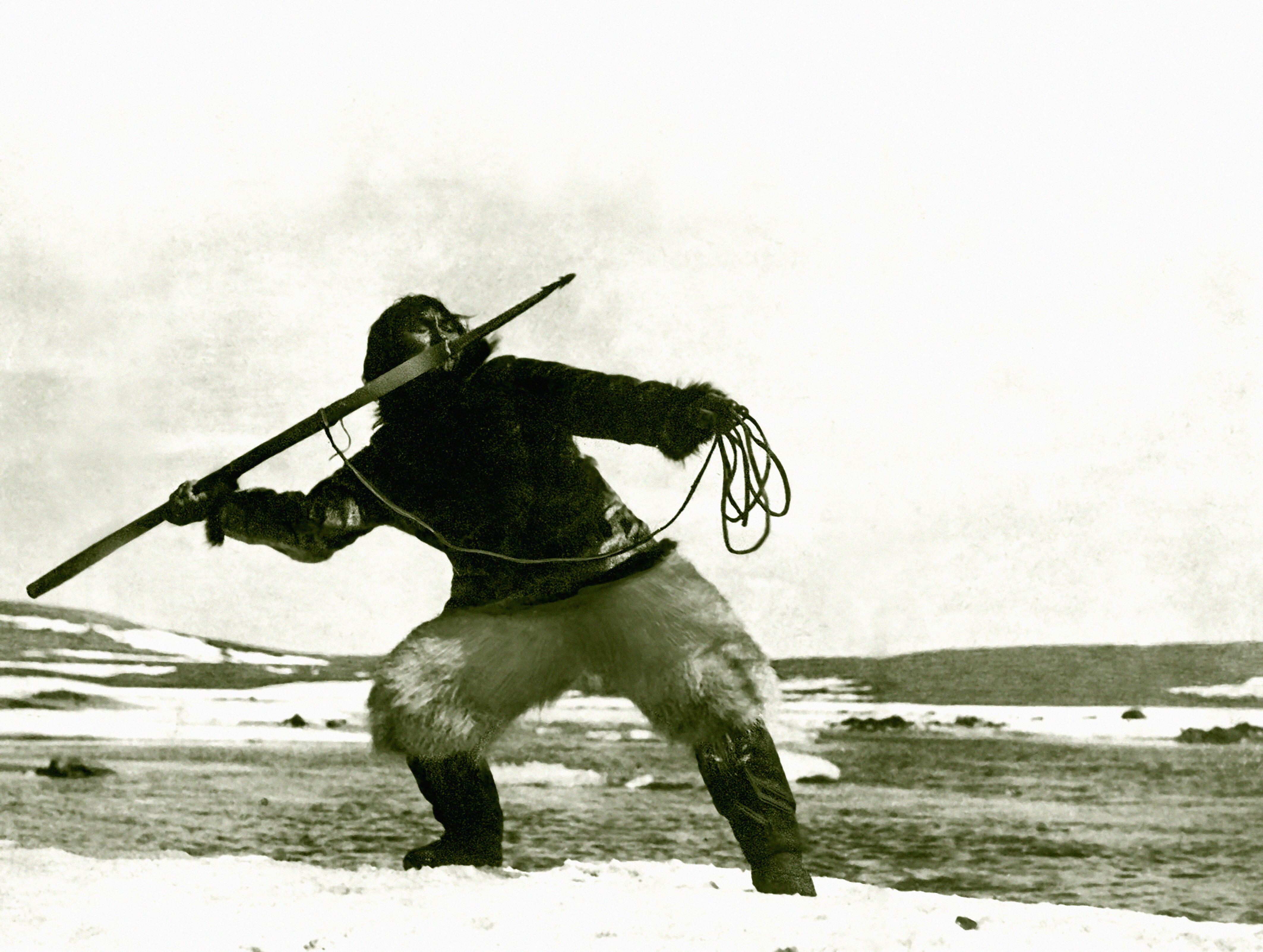
Documentary scholars have often identified Robert J. Flaherty's Nanook of the North (1922) as pioneering the concept of the "docudrama", blending observational footage with staged scenes to depict the Inuit way of life. Others have argued that a variety of non-fiction films preceded Nanook, including newsreel, scientific films, ethnographic films, official public educational and propaganda movies. However, as Brian Winston noted in his introduction to The Documentary Film Book, ‘other films may have had ‘documentary value’, but the power of narrative – determined not so much by what was filmed but by how that footage was edited – is what Nanook’s appearance in 1922 heralded.’
A key figure in the early development of the genre was John Grierson (1898-1972). Although he was not primarily a filmmaker himself, he was a vocal proponent of using film as a tool for social change and is considered the founder of the British documentary movement. In this chapter of The Grierson Effect: Tracing Documentary’s International Movement, Stephen Charbonneau argues that Grierson was a ‘uniquely transnational historical figure’ who synthesised a number of philosophical and theoretical traditions, and through his writings emphasised the connection between film, propaganda, education and citizenship within democratic societies.
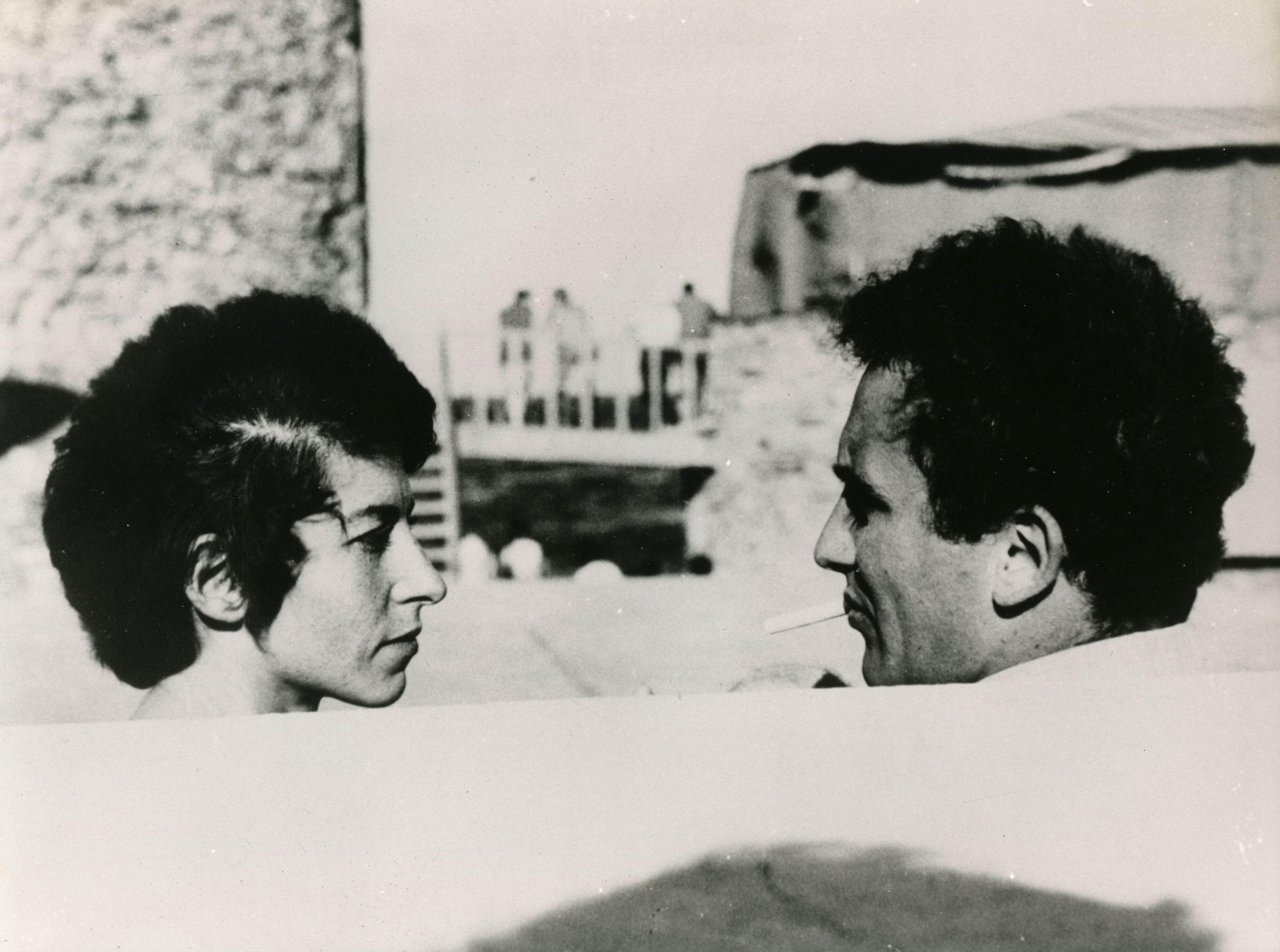
In the aftermath of World War II, filmmakers embraced a more observational approach to documentary, using lightweight cameras and synchronous sound recording equipment. Direct Cinema, as it developed in the USA, and Cinema Verité in France, emphasized capturing reality as it unfolded without interference. Geoffrey Nowell-Smith explores the inception of this cinematic movement in this chapter of Making Waves: New Cinemas of the 1960s. He writes, ‘Whether in the form of cinéma vérité or direct cinema, the revolution was entirely dependent on the development of new technology.’ This new technology came in the form of the Éclair NPR camera, designed by the French engineer André Coutant, which became the camera of choice for the next twenty years. Jean Rouch and Edgar Morin used an early prototype of Coutant’s camera in the filming of Chronique d’un été (Chronicle of a Summer) (1961), a key example of the cinema verité approach. In his entry on the film in 100 Documentary Films, Jim Hillier considers how Rouch and Morin deviated from a strictly observational approach through their use of improvised monologues, and how in doing so, their film ‘reintroduces us [the viewer] to life.’
The 1960s and 1970s saw an upsurge of politically engaged documentary filmmaking. The new ease of use and low cost of video production of the 1980s made it easier for activists to cover situations in remote places. Films like Emile de Antonio's Point of Order! (1964) and Barbara Kopple's Harlan County, USA (1976) addressed social and political issues, advocating for change. In her interview for The Documentary Filmmakers Handbook, Kopple describes the harrowing realities of the coal-miner strike in Harlan County and the determination of the miners and their families, ‘In Eastern Kentucky, the issue was trying to stay alive. We were always trying to film in a way that would ensure nothing would happen to anybody on that picket line and to these people that I’d come to know and care about so much.’

In 1968, Henry Hampton (1940-98), established Blackside, Inc., the largest African-American-owned film company of its time. Through his chronicling of racial injustice, Hampton came to be known as one of the key documentarians of the period. In this chapter of A New History of Documentary Film, Betsy A. McLane describes Hampton’s PBS series Eyes on the Prize (1987) as ‘a touchstone in television documentary history in its telling of the story of race relations in the United States’.
The 1970s also saw the emergence of high-profile environmental documentaries that moved away from a scientific perspective to emphasize the relationship between nature and civilization. A key example was Werner Herzog’s Fata Morgana (Mirage) (1971). Incorporating a series of panoramic shots of the Sahara desert, mirages, animals, abandoned airplanes, and human figures, the film serves as a contemplative exploration of the themes of time, creation, and the human condition. John A. Duvall considers the film’s significance in this chapter of The Environmental Documentary: Cinema Activism in the 21st Century: he writes ‘the film is an ambiguous allusion, suggesting that human civilization may be little more than a fleeting moment in the natural world…as always with Herzog, there is a visionary sensibility behind the concrete images—a mystical yet unsentimental view of nature.’
The advent of digital technology in the late 1990s revolutionized documentary production and distribution, enabling more filmmakers to tell their stories. In the USA, filmmakers like Errol Morris began experimenting with unconventional storytelling techniques and hybrid forms. His The Thin Blue Line (1988) adopted a visually arresting approach, incorporating stylized re-enactments and challenging the boundary between fiction and non-fiction. In this entry on the film in 100 American Independent Films, Jason Wood describes the film as a ‘provocative piece of photojournalism that serves as a sobering meditation on the failings of the American justice system.’
Iranian filmmaker Abbas Kiarostami’s Close Up (Nema-ye nazdik) (1990) similarly challenged the boundary between fiction and documentary. As Jim Hillier writes in In his entry on the film 100 Documentary Films, ‘Close-Up is an intriguing, partly autobiographical reflection on the power and authenticity of cinema’. In this chapter of Projections 4½: Film-makers on Film-making, Kiarostami reflects on the positionality of fact and fiction within his own filmmaking, writing ‘I should confess at once that I haven't been particularly struck by either a director or a film. My films are much more influenced by events which occur in daily life, and which, without realizing it, I store in my memory well before they make their appearance in a new film’.

The 1990s also saw the rise of several key women documentary filmmakers. Amongst them was Kim Longinotto, her film Pride of Place (1976, co-directed with Dorothy Gazidis) led to the investigation and closure of her repressive former boarding school, the film’s subject. In this interview with Fraser MacDonald in Projections 12: Film-makers on Film Schools, Longinotto described her directorial debut as a ‘revenge film’, evidencing a shift wherein documentary filmmakers embraced personal narratives and subjective perspectives. Films like Michael Moore's Fahrenheit 9/11 (2004) and Joshua Oppenheimer's The Act of Killing (2012) blended activism, personal storytelling, and provocative filmmaking techniques.
Today, the ubiquity of camera phones and self-recording on social media platforms has enabled citizen filmmaking to become a key tool in raising awareness, educating, promoting advocacy, and preserving history, particularly when the traditional media machinery fails to convey the socio-political realities of the region. In this chapter of Documenting Syria, Joshka Wessels underscores the importance of YouTube videos in capturing the Syrian Revolution. He argues that not only are these videos essential to the memorialization of the revolution, but that ‘the very identity of Syrian revolutionaries is partly constructed with the audiovisual narratives that are created through these diverse digital platforms.’ Similarly, in this chapter of Egyptian Cinema and the 2011 Revolution, Ahmed Ghazal underscores the significance of the self-reflexive Egyptian documentary Crop (2013), writing ‘The film emphasizes the concept of citizen photojournalism, and historicises its use during the revolution, as an alternative to the misleading state media.’
However, as John Ellis identifies in this chapter of Documentary: Witness and Self-revelation, the genre today remains an incomplete project, as ‘the very technologies that enable documentary filming also frustrate its most idealistic aims of showing things as they are’. As technological developments take place, beliefs about what constitutes adequate documentary communication are also constantly changing. In this chapter of The Act of Documenting: Documentary Film in the 21st Century, Brian Winston, Gail Vanstone and Wang Chi contemplate these changes, ‘All three legs of the traditional documentary—scientistic objectivity, eurocentric production norms, and patriarchal tone—are affected by the digital.’ As the genre expands to embrace new forms of docmedia, for example, web-/i-docs, narrative is no longer a synonym for fiction and non-fiction is not a synonym for documentary.
Film production in China has undergone alternating periods of boom and collapse, with varying degrees of state control and censure. These same conditions have also made it so that, rather than a singular centre of cinema production, there have developed several distinct national cinemas, primarily those of Mainland China, Hong Kong, and Taiwan.
This new short essay and linked free-to-view content explores the history of cinema and television in Mainland China.
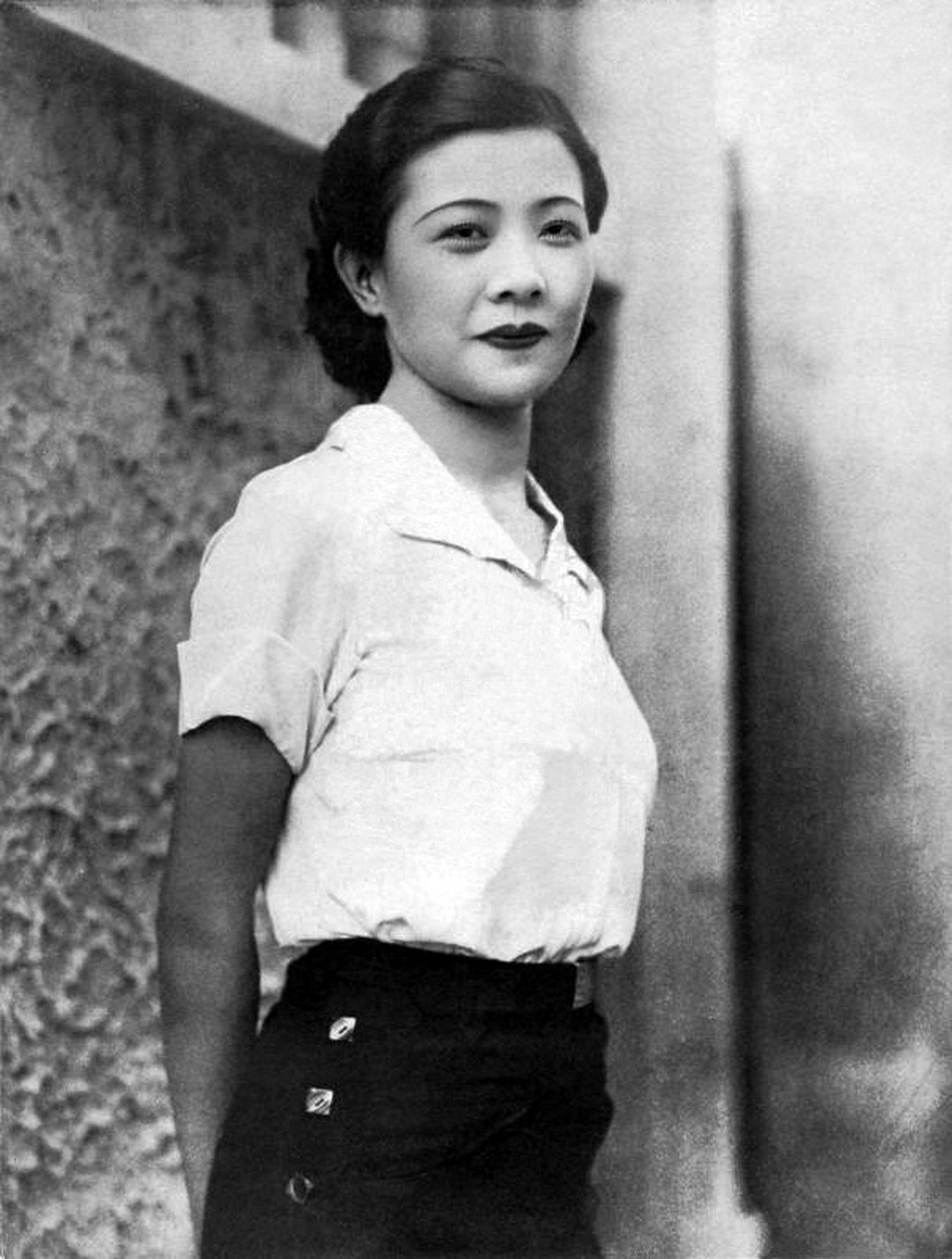
Early film production in Mainland China was concentrated in Shanghai, which was the largest socio-economic hub of the time and afforded relative freedom to filmmakers. As outlined by Laikwan Pang in this chapter from The Chinese Cinema Book, film production during this period came to be roughly categorised into two groups; ‘Hard films (yingxing dianying); those invested with progressive political ideologies, and soft films (ruanxing dianying) focusing on Shanghai’s cosmopolitan sensation and consumerist impulse’. However, several key films, such as Zhengqiu Zheng’s 1934 film Zimei hua (Twin Sisters), rebel against such categorisations, dealing with complex themes that could easily be attributed to either group.
The 1930s also saw the rise of film stardom as a concept, as was exemplified in the short-lived career of actress Ruan Lingyu, who starred in The Goddess (1934) and New Women (1935) before tragically committing suicide in 1935. In this chapter from Chinese Revolutionary Cinema, Jessica Ka Yee Chan examines the nature of Ruan's celebrity, arguing that her acting career and on-and off-screen persona constructed her as a consistent character, ‘the new woman and an iconic figure of modernity, established as a result of the complex interplay between acting, cinematography, characterisation and larger social issues in modernising Shanghai’.
Shanghai’s golden period was brought to an end by the Second Sino-Japanese war (1937-45), with many film workers fleeing to Hong Kong, and the Shanghai film industry eventually falling under complete Japanese control.
However, despite eight tumultuous years of war, with tens of millions displaced, film production soon resumed in Shanghai, with filmmakers channelling their traumas into films such as The Spring River Flows East (1947) and Spring in a Small Town (1948). Between 1946 and 1949 more than 150 feature films were produced in mainland China.

Surprisingly, filmmakers contended with the war head-on, as Paul G. Pickowicz writes in this chapter from The Chinese Cinema Book ‘One of the most important and effective strategies was to make sensational epic films that explored the big picture and told explicit, gut-wrenching stories about the entirety of China’s war experience.’
With the founding of the People’s Republic of China (PRC) in 1949, cinema quickly became a mass production art form and tool for propaganda. Starting from 1951, pre-1949 Chinese films, Hollywood and Hong Kong productions were banned as the Chinese Communist Party tightened its control over mass media. Films produced during the Seventeen Years (1949-1966) were limited by a narrow range of state-sanctioned subject matter and style, and production understandably declined owing to these creative restrictions. In this chapter from The Chinese Cinema Book, Julian Ward describes the anger and frustration of filmmakers during this period, ‘while the prime concern of most film-makers during the Seventeen Years was to avoid egregious political error, others sought to avoid the restrictions imposed by the authorities, looking for opportunities for freedom of expression and minor deviations from an approved line that could change at a moment’s notice’.
With the end of the Cultural Revolution in 1976 came a boom in film production, bolstered by the Fourth Generation of Chinese filmmakers making shānghén jù (scar dramas) such as Evening Rain (1980), which depicted the traumas of the revolution.
The 1980s saw the rise of The New Documentary Movement in China, drastically changing the role of documentary cinema within Chinese society. Yingchi Chu writes in this chapter from Chinese Documentaries , ‘The ‘New Documentary Movement’ has been characterised as paying attention to the poor, the marginal, and ordinary people and their often trivial lives.’ With it, there occurred a shift towards independent and semi-independent films, with the emergence of individual styles, and a realistic, bottom-up rather than top–down description of Chinese society.
The decade after the Cultural Revolution saw a rapid expansion of television stations, coverage, and ownership of TV sets, all resulting in an increased demand for programming. In response to this, China Central Television (CCTV), the only national-level broadcaster, began to produce its own television dramas. As Yik Chan Chin writes in this chapter in Television Regulation and Media Policy in China, ‘Television soon became the most popular leisure activity for Chinese people, who spent 2.2 hours per day watching TV. By 1996, China had about 300 million TV sets, 943 free-to-air territorial television stations with 1,005 channels and 1,285 state approved cable TV stations with 200 million subscribers or 50 million households. Television coverage reached 86.2 percent of the total population.’

The late 1980s also saw Chinese cinema rise to the forefront of the international art-house circuit. As Keith Wagner, Tianqi Yu and Luke Vulpiani note in this chapter in China’s iGeneration, ‘Fifth Generation ‘renegades’ like Zhang Yimou took Chinese cinema to international markets on the strength of iconoclastic styles and exotic subject matter’. Chinese cinema began reaping the rewards of international attention, winning the 1988 Golden Bear for Red Sorghum (1987), the 1992 Golden Lion for The Story of Qiu Ju (1991) the 1993 Palme d'Or for Farewell My Concubine (1993) and three Best Foreign Language Film nominations from the Academy Awards. All these award-winning films starred actress Gong Li, who became the Fifth Generation's most recognizable star, especially to international audiences.
The Sixth Generation filmmakers of the 1990s were a stark contrast to their predecessors. Their films lacked government support or funding, and were characterised by inexpensive production, use of handheld cameras, non-professional actors and quick shooting schedules, with the primary aim of authentically capturing contemporary urban life. Concepts such as individuality, subjectivity, and autonomy became key concerns for Chinese independent filmmakers and scholars.
In this chapter from The Global Auteur, Victor Fan discusses the rise of the geren dianying (personal film) during the 1990s, writing that these personal films engage the viewers in a cinematographic experience in which the self and the other, the subjective and the objective, are renegotiated. Amongst the key filmmakers during this period was Wu Wenguang, who directed Bumming Beijing: The Last Dreamers (1990), and when asked he described his creative process as huidao zizhen (returning to one’s reality).
Chinese-language cinema does not have a singular start date, nor any one place of origin. In the introduction to Contemporary Chinese Cinema and Visual Culture, Sheldon Lu writes that film culture exists at the local and subnational level in a large nation like China. There are resilient dialectal films, of which Cantonese-dialectal cinema from Hong Kong and Taiwan cinema (or Taiwanese-dialectal cinema) are the most well-known examples. Periodically, on and off, depending on the winds of national cultural policies and their enforcement in the PRC, local dialectal films and TV dramas thrive in the provinces and cities of China.
Today, Chinese-language cinema resists a chronological history, with many of these generations of filmmakers and cinematic aesthetics overlapping. Previous works from a variety of different periods and perspectives continue to inspire directors, writers, and producers, and both a fifth and sixth generation film could be released in the same year. Since the late 2000s, the cinemas of mainland China, Hong Kong and Taiwan have become increasingly intertwined, giving us increasingly eclectic mix of genre and styles inspired from the past.
We pay tribute to a giant of French cinema in this new short essay and linked free-to-view content.

Born in Paris to a wealthy Franco-Swiss family, as a young man Jean-Luc Godard was an active participant in the thriving film culture of 1950s Paris, particularly the Ciné-club du Quartier Latin (CCQL), and was part of a circle that included Jacques Rivette, Eric Rohmer, Claude Chabrol and François Truffaut, all cinéastes who went on to become leading lights of the Nouvelle vague/New Wave. When the critic André Bazin founded the journal Cahiers du Cinéma in 1951, Godard became one of its regular contributors, writing articles that helped shape the philosophy of the New Wave filmmakers. He emphasised the 'auteur' or director as cinema's prime creative force, championed an innovative, free-wheeling visual style and subject matter that engaged with contemporary cultural and political issues rather valorising the past, and also celebrated the achievements of Hollywood directors including Howard Hawks and Alfred Hitchcock. Tim Palmer's article, The French New Wave: Insurrection Generation, provides an overview of the movement, its defining principles, key filmmakers, and films.
In the chapter Young Godard from Making Waves: New Cinema of the 1960s, Geoffrey Nowell-Smith considers Godard as auteur, focusing on his early filmmaking from his first feature, À bout de souffle (Breathless) of 1960, to Tout va bien of 1972. In this chapter from Studying French Cinema, author Isabelle Vanderschelden focuses in depth on À bout de souffle, which she suggests can be seen as setting out a manifesto for the New Wave, and Pierrot le fou of 1965, which is regarded by many as the last of Godard's works to be associated with New Wave style, as part of a transition period announcing the even more experimental projects that followed.
One of the most important innovations of the New Wave filmmakers was their pioneering use of sound, both diegetic (within the world of the film) and non-diegetic (music or sound that the film's characters cannot hear). Albertine Fox's book Godard and Sound focuses on the use of sound and silence in Godard's later films. In chapter one she discusses Godard's early sonic experiments and the development of his creative practice in the use of sound and image, diegetic and non-diegetic sound, and silence in his films.
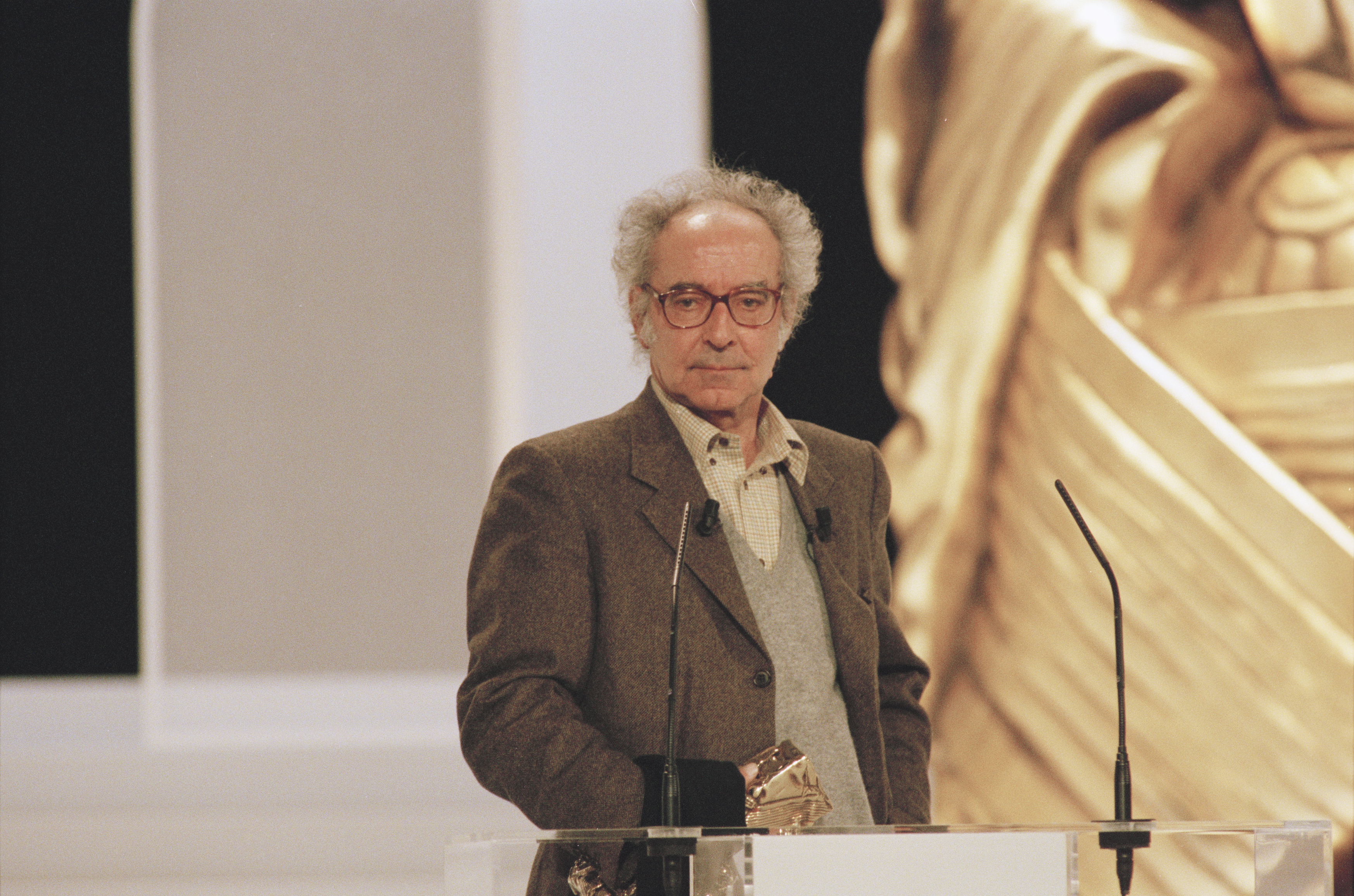
From the very beginning Godard's filmmaking provoked strong reactions, and there was no critical consensus as to its artistic merit. In this extract from The French New Wave: Critical Landmarks, Peter Graham and Ginette Vincendeau present three contrasting contemporary views of À bout de souffle, by the critics Luc Moullet, Raymond Borde and Georges Sadoul. It was American critic Richard Roud who was one of the first and most notable to champion the work of Godard and other New Wave filmmakers. In the Introduction to his 1967 BFI 'Cinema One' study of Godard, Roud sets out why he considers Godard to be one of the most important (as well as controversial) contemporary directors, and Michael Temple's foreword to the book's reissue surveys the history of Godard criticism.
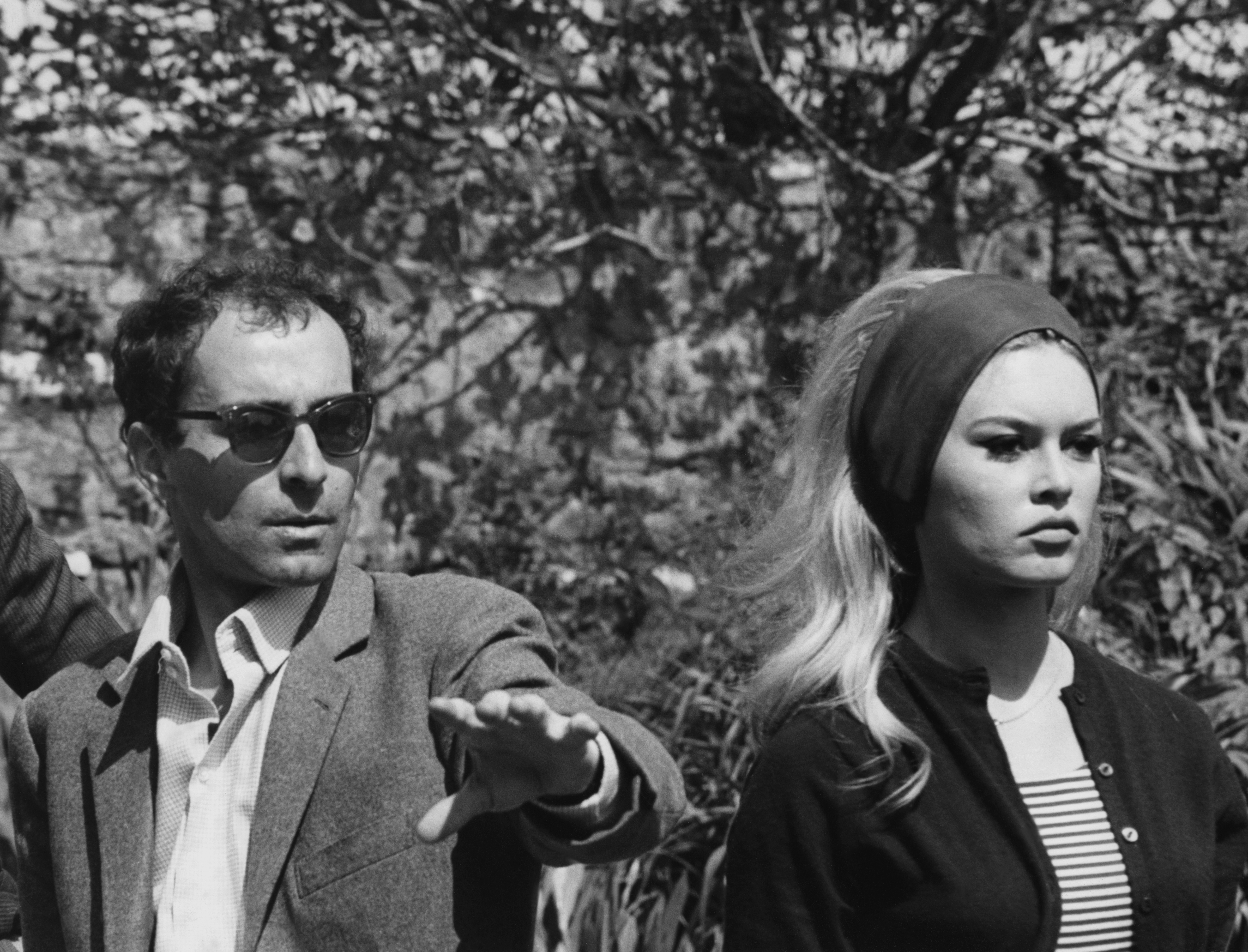
In this chapter from her book Fetishism and Curiosity, Laura Mulvey maps the "painful but obstinate engagement with sex, sexual difference and femininity that has zigzagged across [Godard's] cinema and his politics". Godard confronted the relationship between cinema, the eroticised woman's body, and consumer society in diverse ways, often returning to the figure of the prostitute, who encapsulated the commodification of human relationships under capitalism, from Juliette in Deux ou trois choses que je sais d'elle (1967) to Isabelle in Sauve qui peut (la vie) (1980).

Godard's work from the 1990s and 2000s is characterised by a self-reflexivity, looking back on a century of cinema and on his own life and filmmaking. In this chapter from The Legacy of the New Wave in French Cinema, Douglas Morrey considers Godard's 1995 film 2 x 50 ans de cinéma français, released to mark cinema's first 100 years, and his later epic work Histoire(s) du cinema, completed in 1998. Morrey relates Godard's central role in Histoire(s) as writer, director, editor and narrator to his "long history of self-portraiture on screen and self-mythologizing in the cinema. As early as Bande à part (1964), he famously referred to himself as 'Jean-Luc Cinéma Godard' in the credits […] and, just half a decade into his filmmaking career, in Pierrot le fou (1965), he had already begun the process of quoting himself. Histoire(s) du cinéma, as Jacques Aumont notes, is less of an historical enterprise than an autobiographical one." Morrey also links Godard's denunciation of cinema in Histoire(s) to his family history: "cinema's culpable negligence in failing to testify to the horrors of the Second World War, the willful blindness to history that is tantamount to collaboration, is precisely that for which the director disowned his birth family in the post-war period."

Godard continued to innovate into his eighties, releasing films even after he proclaimed the failure of cinema in the Histoire(s) du Cinéma project. Rick Warner's chapter in The Global Auteur focuses on Godard's 2014 film Adieu au langage, (Goodbye to Language), which won the Jury Prize at the Cannes Film Festival. Warner considers Adieu as an essay film, that is, a self-reflective and self-referential text that blurs the lines between fiction and nonfiction. Adieu is another very personal account in which Godard reflects back on, and reconsiders, nearly every major period of his artistic practice.
American cinema has a contentious history of on-screen representations of race, with issues of segregation, discrimination, and derogatory stereotypes recurring in movies since the industry’s inception. At the same time, Black filmmakers, actors, and production personnel have played a significant, if sometimes unrecognized role, within American cultural history.
Explore the history of race and representation in American cinema through this new short essay and linked free-to-view content.
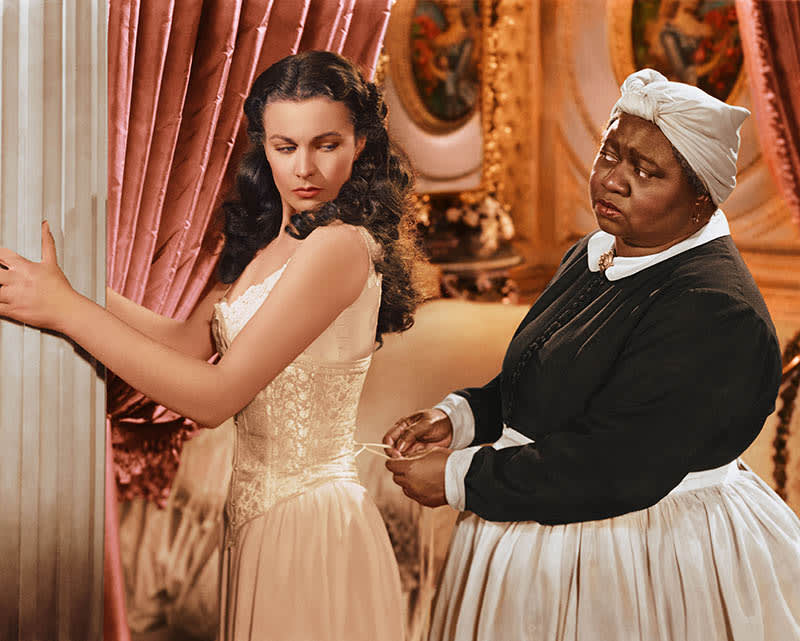
D. W. Griffith’s The Birth of a Nation (1915) occupies a fraught position in the history of American cinema: it has been lauded for its technical accomplishments, pioneering close-ups, fade-outs, and the use of an orchestral musical score, while also being one of the most racist films in Hollywood history. In the introduction to his BFI Film Classic, Paul McEwan writes that there is little place in our understanding of art for a film that exalts ideals we find repulsive, and there are very few historical works that fall into this category. McEwan argues that an acknowledgment of the film’s power allows us to confront its ideology directly.
Gone with the Wind (1939), which followed Griffith’s The Birth of a Nation, is another film that grapples with the art-or-racism dilemma. In this chapter from her BFI Film Classic, Helen Taylor analyses the film’s racial politics and the historical implications for modern viewers. She writes that Gone with the Wind gave the white conservative version of the Civil War a mythic status throughout a century that saw bitter struggles for progress in civil rights and relations between the races. Pro-South films were far more numerous than pro-North, so from 1911 onwards the ‘public memory of the Civil War’ was controlled by a southern bias that argued the War was about states’ sovereignty rather than slavery, and that the gracious and successful character of the Old South – the ‘Lost Cause’ – was violently shattered by a brutal, vindictive North. The film established a pattern of Civil War films that concentrated on the home front (and thus primarily on women) and ignored or sidelined issues of race – from Tap Roots (1948) and Shenandoah (1965) to Cold Mountain (2003). Only in 1989 with Glory was there a focus on actively resistant African Americans fighting in the War on the Union side.
Despite stereotypical race representations being rife in Hollywood during this period, Black directors were already working to push back against harmful tropes. One of the most prominent was Oscar Micheaux, the country’s first major Black filmmaker, who began making films in the 1910s and went on to direct 44 films over the course of his career. He skilfully depicted contemporary Black life, and his film Within Our Gates (1920) strongly challenged the racist stereotypes of The Birth of a Nation, delving into topics such as lynching, job discrimination, and mob violence. In this chapter from 100 Silent Films, Bryony Dixon analyses Micheaux’s Body and Soul (1925), detailing how, in order to produce films with an all-Black cast, Micheaux had to set up his own production company. Micheaux and the Black filmmakers who followed him were themselves subject to the challenges of racial discrimination, be it in the difficulties of securing funding for their films or of finding an audience, despite being shut out of the studio system and mainstream distribution.

By the mid-1950s, the growing momentum of the civil rights movement began to be reflected in Hollywood’s output. In this chapter from 100 Film Musicals, Douglas Pye analyses Otto Preminger's Carmen Jones (1954), one of the earliest musical films that featured a full Black cast and secured Dorothy Dandridge an Oscar nomination for Best Actress – the first ever for a Black woman in a leading role.
The 1960s witnessed a seminal shift in the portrayal of Black people in Hollywood cinema, away from stereotypical representations and towards more relatable and even admirable characters. Sidney Poitier won an Oscar for his role in Lillies of the Field (1963), and went on to star in Guess Who’s Coming to Dinner? (1967), which offered the first positive cinematic look at interracial marriage.
With the release of films like Sweet Sweetback’s Baadasssss Song (1971) and Shaft (1971) emerged Blaxploitation, an ethnic subgenre of the exploitation film. In this chapter from The Cinema Book, Linda Ruth Williams contextualises the distinctive characteristics of Blaxploitation, tracing its origins and contending with its controversial generic conventions. While some hailed the genre as the first to incorporate Black Power ideology and permit Black actors to be the stars of their own narratives, others felt that it was merely a perpetuation of white stereotypes about Black people. Films such as Superfly (1972) and Mack (1973) were both criticised for representing Black men as criminals, gang-members, pimps, and drug dealers and for advancing exaggerated, hypermasculine depictions.
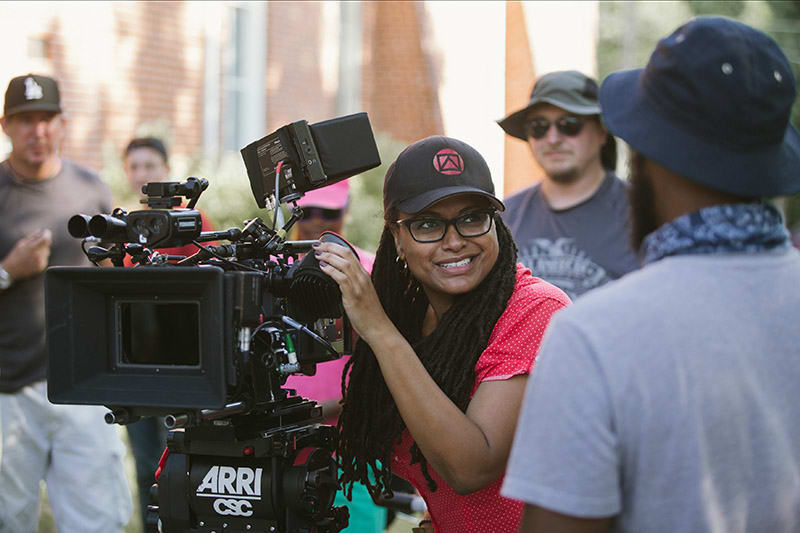
The start of the 1980s crystallised the New Black Cinema movement, which had had several separate beginnings in the late sixties. What gave this movement its particular and unifying character was its determined resistance to Hollywood’s formulaic film ideology. In this chapter of Bringing Up Daddy: Fatherhood and Masculinity in Post-War Hollywood, in which Stella Bruzzi discusses fatherhood in New Black Cinema, she characterises films from the movement as not merely rite-of-passage movies, but also social realist texts that engage overtly with contemporary social issues of Black masculinity.
Films such as John Singleton’s Boyz n the Hood (1991) and Julie Dash’s Daughters of the Dust (1991) are credited as groundbreaking works for their ambition and diversity of genre and style. Dash, a prominent part of the L.A. Rebellion film movement, was the first Black woman to direct a feature-length film that was distributed nationwide. In this chapter from Women, Artists, Feminism and the Moving Image, So Mayer discusses Dash’s 1975 short Four Women as expressing ‘the complex struggle to negotiate racist stereotypes; the necessity of code-switching within a racist culture; the imperative of internal decolonization; all while refusing to adhere to a European Enlightenment concept of the stable, unitary self.’
In 1985, Spike Lee began work on his first feature film, She’s Gotta Have It. With a budget of only $115,000, the entirety of the film was shot over twelve days. In this chapter from Spike Lee: That’s My Story and I’m Sticking to It, Lee discusses the difficulties in securing funding for the film: ‘We had to put the money together nickel by nickel, it was one of the hardest things I’ve ever had to do. But I’m glad that it got made the way that it did.’ The film went on to gross $8 million at the U.S. box office and Lee was awarded the Prix de la Jeunesse at the 1986 Cannes Film Festival.
In this chapter from 100 American Independent Films, Jason Wood highlights the significance of She’s Gotta Have It, not only to Lee’s oeuvre, but to Black filmmaking in general, while acknowledging feminist criticism of the film’s misogynistic overtones. Lee, whose Do the Right Thing three years later fully established the notion of a commercially viable Black cinema, helped create an environment in which other African American film-makers, including John Singleton, Leslie Harris, and Matty Rich, were able to find funding for their pictures. In this chapter from Studying American Independent Cinema, Rona Murray considers the politics and aesthetics of race in Lee’s cinema from Do the Right Thing of 1989 to his 2006 TV documentary series When the Levees Broke, in which Lee visited New Orleans in the wake of the devastation wrought by Hurricane Katrina.
More than a century has passed since the release of The Birth of a Nation, during which time several generations of Black filmmakers have explored wide-ranging possibilities for authentic and nuanced representations of race on film. The modern era of Black cinema has seen directors such as Ava DuVernay, Radha Blank, Dee Rees, Barry Jenkins, and Jordan Peele tackle the complexities of representation, with both auteurist style and commercial appeal. Films such as Moonlight (2016) and Get Out (2017) have cemented both the cultural cache and financial viability of Black cinema. Ryan Coogler’s Black Panther (2018) grossed over $1.3 billion globally, making him the first millennial Black director to have made a billion-dollar film. The success of the film eschews Hollywood’s long-held practice of keeping Black cinema deliberately underdeveloped, underfunded, and apart from mainstream distribution.
Explore the history and practice of queer cinema through this new short essay and the linked free-to-view content below.

Gay and lesbian representation has been a feature of cinema ever since its inception, but before homosexuality was legalised in some countries, filmmakers found other ways to signal gay characters and queer desire. In this chapter on representations of gay men in early German and Swedish cinema, Shane Brown traces how directors including Dreyer and Stiller used sympathetic gay characters to argue against laws that criminalised homosexuality. In classical Hollywood cinema, forbidden sexualities were often implicit, and queer desire displaced into manifestations of the monstrous or the supernatural. In Patricia White’s study of Robert Wise’s 1963 horror classic The Haunting, she explores the representation of lesbian desire and its implications for the lesbian spectator. In more recent times, despite changing attitudes and liberalising legislation, homophobia and transphobia have continued to impact the lives of gay and trans people. This is powerfully shown in Ang Lee’s 2005 Brokeback Mountain and Kimberley Peirce’s Boys Don’t Cry of 1999, a fictionalisation of the short life of the trans man Brandon Lewis, discussed by Rona Murray in this chapter from Studying American Independent Cinema.
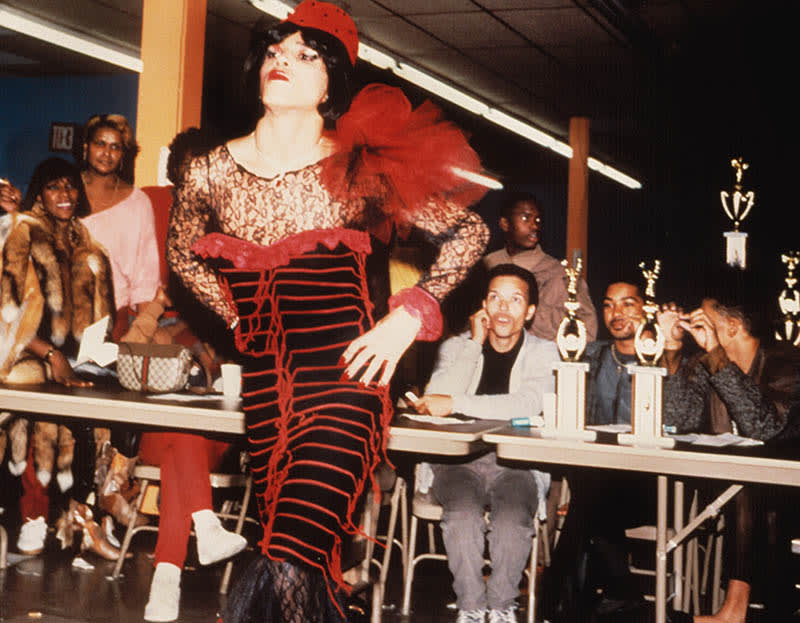
Empowered by the arrival of cheaper and portable video cameras, filmmakers, often working within radical or experimental film networks, began from the early 1970s to document gay and lesbian lives and key moments in gay and lesbian history. In this chapter from A New History of Documentary Film, Betsy A. McClane describes a history of queer documentary from Word is Out: Some Stories of Our Lives (1977) by the Mariposa Film Collective to Rob Epstein’s The Times of Harvey Milk (1984) about the gay San Francisco politician murdered by a homophobic colleague, and 1989’s Common Threads; Stories from the Quilt by Bill Couturié, Rob Epstein and Jeffrey Friedman, about the AIDS crisis.
In the BFI Screen Guide 100 Documentary Films, Barry Keith Grant discusses two films of 1990 that portray Black and Latinx queer subcultures and sexualities. Grant explores Marlon Riggs’ Tongues Untied in this chapter, which celebrates Black gay culture at the same time as it acknowledges the impact of racism, homophobia and the AIDS crisis, and Jennie Livingston’s Paris is Burning in this chapter which chronicles New York City’s performative ball subculture and the street life of its Black and Latinx gay male and transgender communities.

The 1990s saw the development of a new movement of gay and lesbian filmmakers, heralded by the film critic B. Ruby Rich as ‘the New Queer Cinema’. This article by Jackie Stacey in The Cinema Book explains that the ‘New Queer Cinema’ was defined by a deconstructive cinematic style, a fierce and vocal political protest and a focus on the dark ‘underbelly’ of sexual desire. Films such as She Must Be Seeing Things (Sheila McLaughlin, 1987) and Tom Kalin’s Swoon (1992) examined questions of violence, jealousy, power imbalances, possessiveness and betrayal within gay and lesbian relationships. In this chapter from International Film Festivals, Ragan Rhyne examines the importance of lesbian and gay film festivals for the New Queer Cinema movement, providing a space for queer filmmakers to exhibit and gain wider distribution for their work, as well as an opportunity for gay and lesbian audiences to see consciously ‘queer’ movies.

In this article from the film journal Projections, two leading lights of Queer cinema, the British director Derek Jarman and the American Gus Van Sant, discuss their movies including The Last of England, Edward II, Drugstore Cowboy and My Own Private Idaho in relation to gay sexuality and politics. In this interview with the film writer Geoffrey Macnab, Isaac Julien, another artist-filmmaker who came to prominence in the 1990s, describes how his filmmaking practice has been informed by his experience as a Black British gay artist.
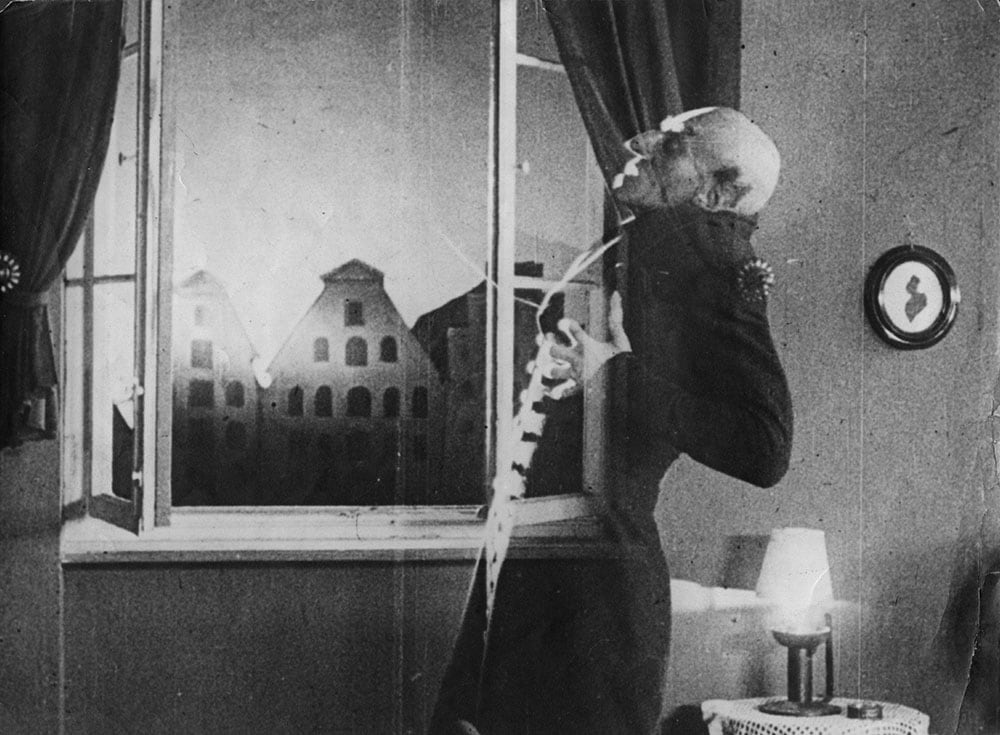
The figure of the vampire has haunted the history of cinema from its very early days. In his BFI Film Classic on F.W. Murnau’s 1922 Nosferatu: Eine Symphonie der Grauens (Nosferatu: A Symphony of Horror), Kevin Jackson invokes the links between cinema and vampirism: like vampires, cinema is peopled by the half living, actors reanimated by the magic of the projector, coming to life only in the darkness. Horror fiction provides a way for us to confront our deepest fears, or to address our collective mourning, trauma or anxiety about political, social or environmental upheaval. In this chapter from Nosferatu (1922): Eine Symphonie des Grauens, Kevin Jackson writes that the film expresses the traumatic aftermath of the First World War. In the words of the film’s producer and designer Albin Grau, Nosferatu was “unleashed across the earth like a cosmic vampire to drink the blood of millions and millions of men”, but it also expressed the aftershock of the terrifying Spanish influenza pandemic of 1918-19 that killed more people than all the guns and bombs of the war. In this chapter on Let the Right One In (2008), Anne Billson explores the vampire’s cinematic meanings in relation to religion, sexuality and gender identities.
Vampires have long been associated with the crumbling ‘old world’ of the European aristocracy. But what happens when vampires come to America? In another cinematic analogy, some critics have likened the American vampire to the filmmakers and stars of early Hollywood, many of them émigrés from a Europe in turmoil. In this chapter from New Vampire Cinema, Ken Gelder discusses modern American vampire cinema, from Michael Almereyda’s New York vampire movie Nadja (1994) to the Tex Mex vampire trilogy John Carpenter’s Vampires (1998-2005).
Feminist and queer readings of the vampire have focused on vampire narratives as an expression of anxieties about sexuality and sexual desire. In the Introduction to Queer Horror Film and Television, Darren Elliott-Smith traces queer readings of the vampire from Nosferatu to the TV series American Horror Story (2011-present).

The zombie, the vampire’s undead cousin, has its roots in the transatlantic slave trade, which brought West African concepts of soul capture to Haiti, where the figure of the zombie developed in Haitian folklore, entering American consciousness as a result of the US invasion and occupation of Haiti from 1915-34. In this chapter from Otherness in Hollywood Cinema, Michael Richardson traces changing manifestations and meanings of the zombie in Hollywood cinema, from White Zombie (1932) through to George A. Romero’s cult movie Night of the Living Dead (1968) and its four sequels. Zombies enjoyed a resurgence in popular culture at the turn of the millennium, and in her overview article 'Zombie Films Since 9/11', Sarah Lauro explores how recent movies such as the Korean film Last Train to Busan (2010) place their zombie origin stories in the excesses of global capitalism, such as environmental abuse and reckless scientific experimentation.
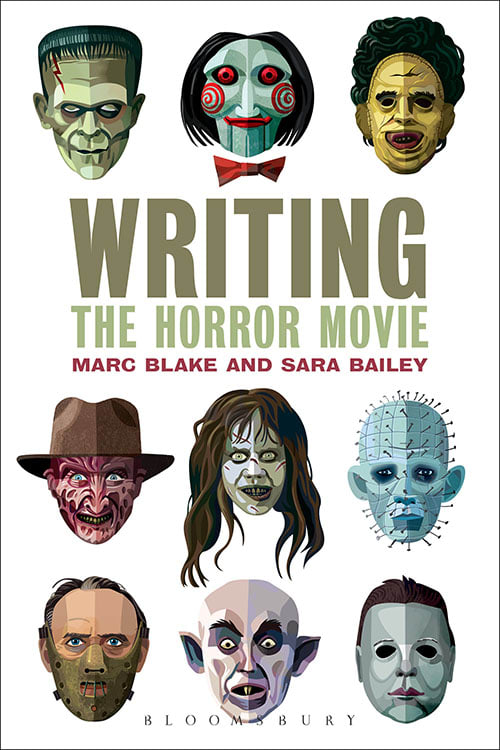
Horror can be an appealing genre for first-time filmmakers. It has an engaged fan community, and provides opportunities for filmmakers to create impactful movies on a low budget. Shot on a micro-budget by novice directors, both The Blair Witch Project (1999) and Paranormal Activity (2007) were hugely successful in their own right, leading to a series of prequels, sequels and spin-offs. In this chapter from the book The Filmmaker’s Book of the Dead: A Mortal’s Guide to Making Horror Movies, Danny Draven takes aspiring filmmakers through a range of horror sub genres, from the supernatural thriller to the monster movie, with case studies of key movies and guides to further viewing. In this chapter from his book on The Blair Witch Project, Peter Turner traces the film’s script development, funding and production history as “an inspiring example of inventive independent filmmaking”. Tips and strategies for writing and, importantly, selling a script for a low-budget horror movie are provided by Marc Blake and Sara Bailey in this chapter from their book Writing the Horror Movie.
Screen Studies’ Filmmaking collection fills an important gap in the curriculum by bringing practical film experience to the forefront, marrying it with insightful theoretical understanding and bridging the gap between material on critical film studies and material focused only on film production.
Dip into the collection below to learn more about screenwriting, lighting, visual effects, distribution and film programming, which are just a few of the key areas of filmmaking covered in this collection.
The linked chapters are available to view throughout this Fall 2021 term.

Jack Epps Jr., screenwriter for such films as Top Gun, Dick Tracy, and Turner & Hooch, and author of Screenwriting is Rewriting, writes on the art of rewriting as a necessary tool in the screenwriting process. He also interviews Academy-Award-winning screenwriters Robert Towne (Chinatown) and Susannah Grant (Erin Brockovich) about their craft.

Access to expensive equipment isn’t always possible. Lighting for Cinematography guides readers to use household items, in lieu of expensive equipment, in order to light a scene engagingly. Every chapter includes stills, lighting diagrams and key advice from professionals in the field, as well as lighting exercises to help the reader put into practice what was covered. Get started with the basics in this chapter on The Magic of Light: What Lighting Does and What We Can Make It Do.
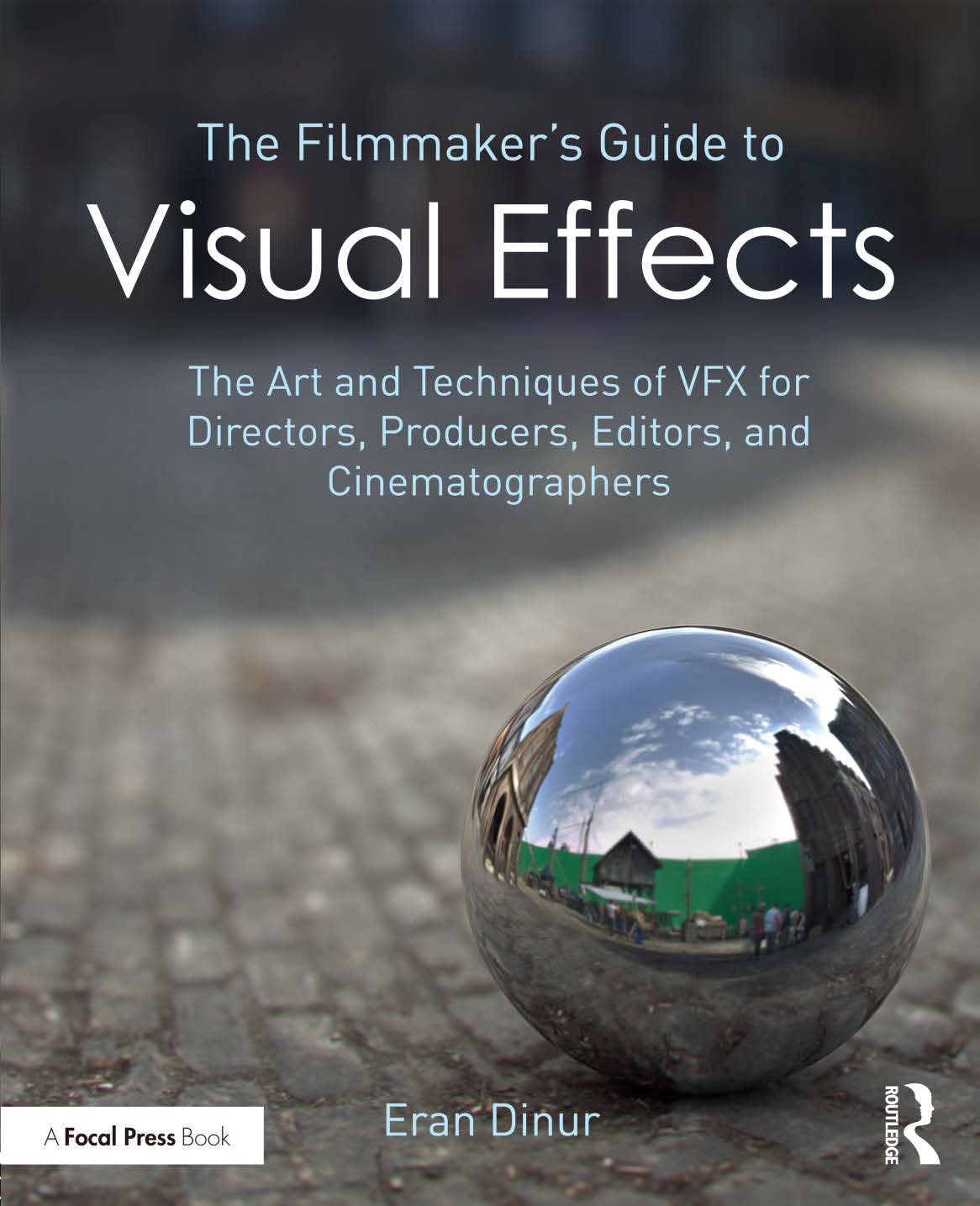
The Filmmaker’s Guide to Visual Effects proves that you don’t have to be an expert to include stunning visuals in your film. Award-winning special effects supervisor Eran Dinur guides the reader through conceiving, designing, budgeting, planning, shooting, and reviewing visual effects, from pre-production through post-production. Test your knowledge on key subjects, such as the difference between “special effects’ and ‘visual effects’, in this chapter on Core Concepts.

It’s vitally important to consider the business side of filmmaking, including marketing and distribution. Top executive Scott Kirkpatrick shares his wisdom in Introduction to Media Distribution, a straightforward, clear, and insightful approach to understanding the basics of how the global distribution marketplace works. This chapter on Practical Approaches for Kick-Starting Your Career offers tips to help you on your journey into the film industry.

Tasked with choosing a mix of films that will both cater to current audiences and attract new business, a film programmer needs specific skills in order to be a success. Knowledge of film is key, along with insight into the audience, negotiation skills and an understanding of finance. Here you can read an interview with Clare Binns who reflects on film programming and her 25 years in the industry.
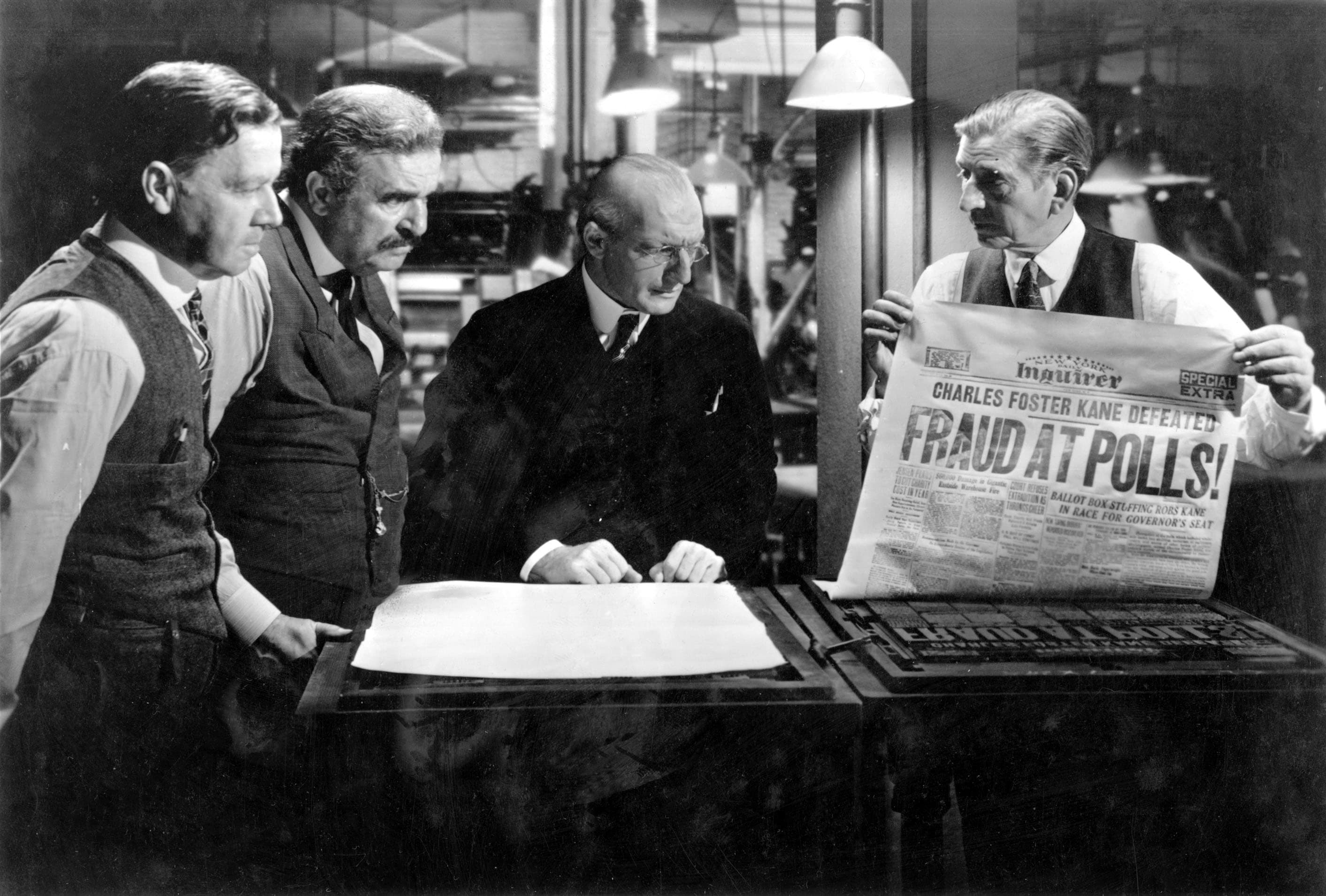
This month we explore Orson Welles’ 1941 multi-faceted cinematic puzzle, Citizen Kane. The movie presents the life story of Kane, a media baron and politician based on the press magnate William Randolph Hearst. Described by Barry Keith Grant as a ‘cubist portrait’, Welles’ film follows the journalist Jerry Thompson (William Alland), on a quest to discover the meaning of Kane’s dying word, “rosebud.” Thompson speaks to those who encountered Kane in his personal and professional life – his second wife, Susan Alexander (Dorothy Comingore); his late banker and financial advisor, Walter Thatcher (George Coulouris); his business manager, Bernstein (Everett Sloan); his boyhood friend Jed Leland (Joseph Cotten), and Raymond, his butler (Paul Stewart).
Citizen Kane has inspired criticism and analysis from a range of perspectives, including Laura Mulvey’s discussion of the film from a feminist psychoanalytic standpoint in her BFI book ‘Fetishism and Curiosity’. Mulvey situates the film in its historical context – it was released six months before Pearl Harbor, in an America split between isolationists such as Hearst, backed by his press empire, and ardent anti-fascists such as Welles, who was deeply engaged and influenced by European cultural forms such as German Expressionism. She goes on to consider how reading the film through a Freudian lens (despite Welles’ own claim that it represented mere ‘dollar-book Freud’) reveals a wealth of psychoanalytic reference and a narrative structure informed by psychoanalytic theory.
Read Fetishism and Curiosity: From Log Cabin to Xanadu: Psychoanalysis and History in Citizen Kane
The story of the Kane screenplay, co-credited to Herman J. Mankiewicz and Orson Welles, is told in the Academy Award™-nominated movie Mank (2020), directed by David Fincher. In his chapter on Citizen Kane in ‘Constructing Dialogue’ Mark Axelrod takes a deep dive into the film’s opening sequences and shows how the screenplay sets up the QBA, or Question to be Answered – ‘what is “rosebud”?’.
The artistic triumph that Kane represents arose from the coming together of a group of expert creatives – not only the director, actors and screenwriter but editor Robert Wise and composer Bernard Herrmann. Herrmann composed not only the film’s non-diegetic music but also created an aria from a fictional opera, Salammbo, to be performed (disastrously) by Kane’s wife Susan Alexander, whom Kane encourages to pursue an operatic career far beyond her capabilities. Commenting on the scene, Herrmann wrote “Our problem was to create something that would give the audience the feeling of the quicksand into which this simple little girl, having a charming but small voice, is suddenly thrown.” In this chapter from his book ‘Cinema’s Illusions, Opera’s Allure’, David Schroeder explores the role opera plays in Citizen Kane, both to signal the pretensions of the high society to which Kane aspires to gain entry, but also to signal the tragic mismatch between Susan’s talents and the great stage onto which Kane’s ambitions have thrust her.
Read Cinema's Illusions, Opera's Allure: Deflated and Flat: Opera in Citizen Kane
A film such as Citizen Kane does not exist in isolation, and in their discussion of the film in their book ‘The Language of Film’ Robert Edgar, John Marland and Steven Rawle show how its meanings are imparted through the audience’s prior knowledge of other cinematic, literary and media texts and genres to which the film refers. They explore how Kane continues to resonate in contemporary culture, most recently in controversies around ‘Fake News’ and the power of the media in the run up to and aftermath of the 2020 US Presidential Election.
Screen Studies brings together a wealth of content addressing the many forms of filmmaking in national and regional cinema contexts as well as cinemas of migration and diaspora. In the introduction to her book World Cinema and the Ethics of Realism, Lúcia Nagib addresses the term ‘world cinema,’ arguing that it should not be seen as the ‘other’ of ‘mainstream’ or Hollywood cinema, but when approached from “a positive, democratic and inclusive” perspective, as a diverse phenomenon with “peaks of creation in different places and periods.”
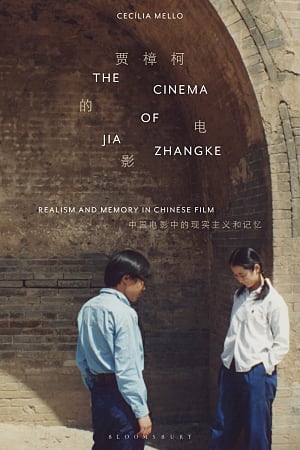
Cecília Mello builds on Nagib’s idea of world cinema as enjoying “peaks of creation” in her study of the contemporary Chinese director Jia Zhangke. Mello explores how Jia tackles questions of realism and memory in films made from the 1990s onwards, identifying his recurrent aesthetic and thematic preoccupations. Returning to the question of national identity and cinema, she considers the contexts of Jia’s creative practice in China’s political and artistic history, but also how he has been influenced by other traditions of making, writing and thinking about cinema.

Many national cinemas developed in the 20th century alongside their country’s path to a modern nation state. Sarah Barrow considers the part played by cinema in forging a Peruvian national identity in Chapter 1 of her book Contemporary Peruvian Cinema. She draws attention to the tension between the state’s desire to use cinema to tell a unifying story about national history, and the desire of filmmakers and thinkers to represent difference and minority voices – for example, the Third Cinema movement which emerged after the Cuban Revolution, which was committed to social and cultural emancipation.

Filmmakers in Africa have often charted a path between a pan-African cinema, asserting an ‘African’ fellowship across national borders, and the desire to create a national cinema as part of the development of a post-colonial national identity. In a conversation with Valentina Vitali and Paul Willemen for their book Theorising National Cinema, the filmmaker John Akomfrah discusses this tension in post-war African cinema and cultural politics, with reference to directors such as Ousmane Sembène and Suleymane Cissé.
The responsibility of cinema to foster political and cultural change is explored by James S. Williams in his Ethics and Aesthetics in Contemporary African Cinema. Williams discusses how the 1960s generation of black African filmmakers and critics, wrestling with the legacies of European colonialism, believed that cinema had an urgent imperative to create idealizing myths of nationhood, modernity and cultural revolution. Williams shows how, in representing subjects such as the eroticised male body, the new African metropolis, and questions of migration and transculturalism, more recent filmmakers such as Abderrahmane Sissako, Mahamat-Saleh Haroun, Fanta Régina Nacro, Alain Gomis, Jean-Pierre Bekolo, Katy Lena Ndiaye and Mati Diop are helping to redefine ‘African cinema’ in ways that are no longer tied to the ideals of pan-Africanism.

In one of our original overview articles, Daisuke Miyao traces the development of cinema in Japan in the early 20th century, highlighting how Japanese film-making grew out of kabuki theater traditions.

The 1930s, 1940s and 1950s saw the flourishing of talents of the great directors Yasujiro Ozu, Kenji Mizoguchi, Mikio Naruse and Akira Kurosawa. In the opening chapter of Classical Japanese Cinema Revisited, Catherine Russell considers the industrial, cultural and aesthetic features of classical Japanese cinema, its relationship to Hollywood and to Japanese national identity. In a similar vein, Robert N. Watson’s study of Throne of Blood, Kurosawa’s epic adaptation of Shakespeare’s Macbeth in the BFI Film Classics series, considers how the film highlights “analogies between British and Japanese medieval history, and between Shakespeare as an epitome of high western civilisation and Noh drama as an epitome of high Japanese civilisation.”

Hit by the rise of television and home video, theatrical cinema in Japan declined in the second half of the 20th century. But the late 1990s onwards has seen a resurgence of a lively national cinema with directors such as Kitano Takeshi and Hirokazu Kore-eda releasing films that are both critically and commercially successful, and the popularity of genres such as the yakuza (gangster) film, horror, and anime. In this chapter from Contemporary Asian Cinema, Darrell William Davis provides an overview of the Japanese cinematic landscape, and Michelle Le Blanc and Colin Odell’s BFI Film Classic considers one of the most memorable examples of anime: 1998’s post-apocalyptic cyberpunk feature Akira.
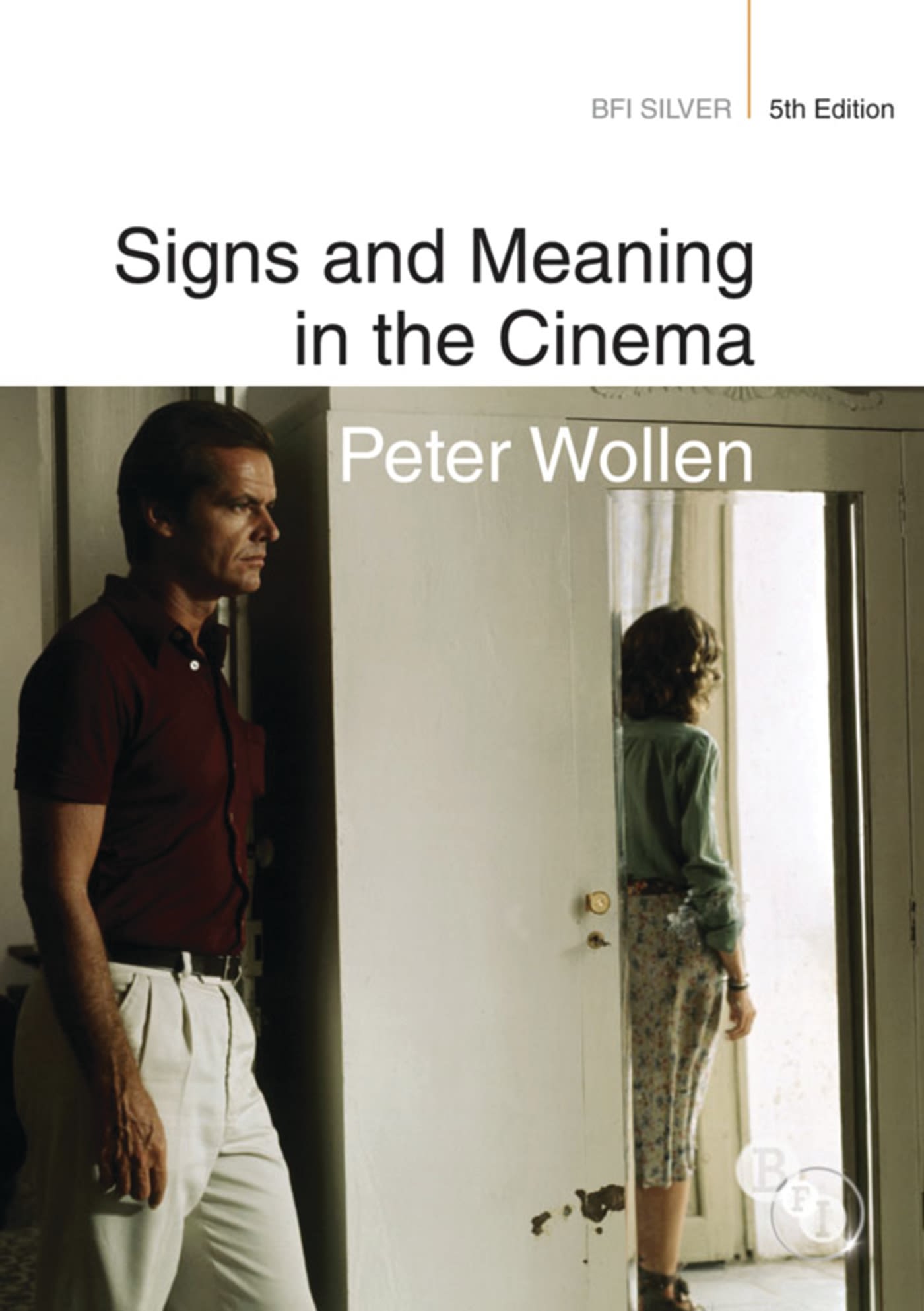
Peter Wollen’s writing was hugely influential for the development of film studies. While working at the British Film Institute, Wollen wrote the seminal film theory text, Signs and Meaning in the Cinema, introducing ideas from semiotics and post-structuralism to the analysis of film. First published in 1969, Signs and Meaning was published in a new edition in 2013, with a foreword by D.N. Rodowick in which Rodowick considers the importance of the book in its various editions in changing the way we understand film as an art form.
In this chapter, Wollen considers the auteur theory developed by critics at the Cahiers du cinéma in relation to the films of directors including Howard Hawks and John Ford.
Wollen was to return to the auteur theory in his masterly analysis of Gene Kelly’s role as co-director, choreographer and performer of the eponymous dance sequence in Singin’ in the Rain, the subject of Wollen’s contribution to the BFI Film Classics series.

The film philosopher and historian Thomas Elsaesser played a key part in the development of the academic study of film. Elsaesser was based for much of his career in the UK, at the University of East Anglia, and latterly at the University of Amsterdam. Like Wollen, Elsaesser engaged with both classical Hollywood and European cinema, and with questions of film authorship. In his study of the 1925 science fiction classic Metropolis, Elsaesser situates the film as an example of ‘UFA style’ – its technical complexity and attention to detail not attributable solely to the vision of director Fritz Lang, but the result of a collaboration “between set designers, cameramen, art directors and countless other, highly skilled specialists” employed by the film studio, UFA.
In his contribution to Alfred Hitchcock: Centenary Essays, Elsaesser explores what he terms the ‘dandyism’ of Hitchcock’s unique persona, a quality that also informed his filmmaking style. Elsaesser suggests that Hitchcock’s life and art alike represent “a determined protest, the triumph of artifice over accident, a kind of daily victory over chance, in the name of a spirituality dedicating itself to making life imitate art.”
In a contemporary globalised cinema landscape, is the concept of the director-as-author still valid? In this chapter from his Limina Award-winning book European Cinema and Contintental Philosophy, Elsaesser outlines some of the defining features and industrial forces shaping 21st century authorship.

“I had a world. I don't think I had a career. I made films.”
- Agnès Varda, 2009
Agnès Varda was not only a pioneering film-maker in her own right, but a key figure in the French New Wave movement, characterised by its realist style, influenced by Italian neorealism and Hollywood, its subject matter of intrigue and crime and its questioning of bourgeois social norms. Hilary Neroni’s study of Varda’s classic Cléo de 5 à 7 situates Varda as part of the French New Wave and as an avowedly feminist film maker.
In an article for the French film journal Positif, Varda herself looks back on forty years of film-making since the release of her first feature La Pointe Courte (1955) and her artistic debt to the great director Luis Buñuel. As Kate Ince describes in her book The Body and the Screen, Varda’s documentary Les plages d’Agnès (2008) mixes autobiographical narration with installation art and filmic and photographic montage in an evocative journey through her life and film-making career.

Film festivals have changed hugely since the first festival, Venice, opened in August 1932 with a screening of Dr Jekyll and Mr Hyde. The biggest, such as Cannes, Berlin, Venice, Sundance, and Toronto, function variously as global film marketplaces, the chance for a ‘first look’ at new releases before they make it to theaters, and for audience engagement beyond the screen, with personal appearances by film-makers and stars. In the film journal Projections, Gus Van Sant recalls a memorable encounter with Derek Jarman at the Berlin Film Festival and, in The Guerilla Film Makers Movie Blueprint, Chris Jones provides a how-to guide to launching your film on a global stage.

The 21st century has witnessed an ever-increasing multiplicity of festivals: local and regional, genre or identity based, even digital festivals. Film festivals can provide an opportunity for audiences to engage with films in a very different way to a standard cinematic experience – explored by Lesley-Ann Dickson in her case study of programming and exhibition practices at the Glasgow Film Festival, and Rosana Vivar in her research with fan communities at the San Sebastian Horror and Fantasy Film Festival. Geli Madelmi surveys the emergence of online festival platforms that enable the viewer to program their own personal film festival from amongst thousands of new releases.

Stanley Kubrick's impact on cinema goes far beyond the fourteen films he directed though, each meticulously-executed artwork, from his early non-fiction short The Day of the Fight (1953) to his late masterpiece Eyes Wide Shut (1999), is testament to his holistic, perfectionist approach to film-making. In one of our new overview articles, Maria Pramagiorre dubs Kubrick’s oeuvre ‘a cinema of failure’: his anti-heroes, despite inhabiting hyper-masculine milieus, embodying a troubled masculinity beset by anxiety and weakness.

In his study of Kubrick’s ‘Total Cinema’, Philip Kuberski describes how the director, who in his early career had worked as a photographer, used both natural and artificial light ‘as a means of illumination’, to create visual effect and impart meaning. In addition to their formal innovations, Kubrick’s films reached beyond the conventions of genre. In ‘The Cinema of Stanley Kubrick’, Norman Kagan explores how Kubrick consistently tested genre boundaries, whether in the science fiction epic 2001: A Space Odyssey (1968) or the claustrophobic horror The Shining (1980). Discussing Barry Lyndon (1975), Kubrick’s foray into period drama, Ryan Gilbey argues that, by avoiding “the fusty clichés of tour-guide film-making”, Kubrick achieves an emotional authenticity that allows contemporary audiences to connect with its 18th century characters.